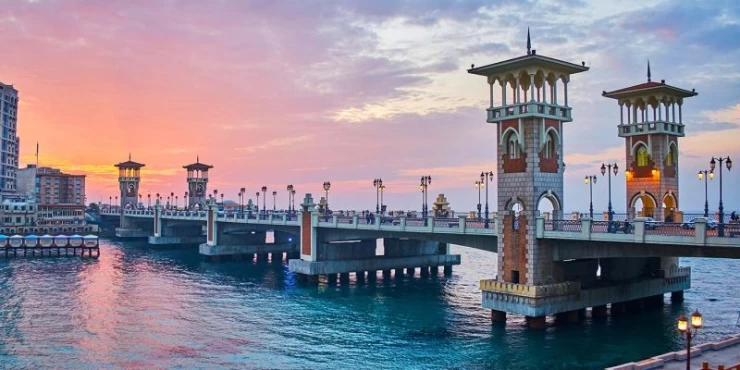-webp.webp)
The Catacombs of Kom el Shoqafa
Facts About The Catacombs of Kom el Shoqafa
Kom el-Shokafa's tombs are among the most significant historical archaeological sites in Alexandria. Located south of the Mina el-Basal neighborhood in the Kom el-Shagafa region, these tombs are believed to be one of the Seven Wonders of the Middle Ages.
Among what are called Seven Wonders of the Middle Ages, it is seen to be one. Sculptures and archaeological remains at the cemetery show a variety of styles that mix components borrowed from Greek, Roman and Egyptian cultures. In the middle of the mausoleum, there is a circular staircase that descends to rock-hewn catacombs of the period of Antonine Emperors during 2nd century AD.
The Kom al-Shaghafa area is characterized by its strategic location and historical importance. Most of the Roman-era tombs in Alexandria are located in the western necropolis, with the exception of the “Tigran Pasha Street” tomb, which was discovered in the east of the city.
Kom al-Shaghafa cemetery is located south of the Mina al-Basal neighborhood and is considered one of the most important cemeteries in the city. The region's name comes from the large amount of pottery and crushed rock that used to accumulate there. The cemetery was just unintentionally found on September 28, 1900, although excavations in this region had started as early as 1892.
It is thought that the tomb was not constructed in a single shape but rather grew throughout the ages due to its arrangement, intricacy, and variety of ornamental components.
According to the excavations, the main tomb dates back to the period between the first and second century AD, specifically the end of the first century and the middle of the second century.
This is confirmed by the relief sculpture found in the main tomb, and the correct Egyptian drawings dating back to the mid-Roman period.
Coins dating from the period between the reign of Traiman and the reign of Clinius the Younger have also been found, indicating that the tomb was used until the beginning of the fourth century AD before it was abandoned.
The layout of the tomb shows that it initially belonged to a wealthy family, and then was used to bury several families after it was taken over by a group of welders.


















